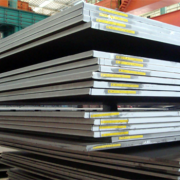How do alloying elements affect the performance of cryogenic steels?
We usually call the steel used the temperature range -10 to -273℃ as low-temperature steel or cryogenic steel According to alloying element content and structure, cryogenic steels can be divided into: Aluminum killed C-Mn steel such as 06MnVTi, 06MnVal, 09Mn2Vre, 06MnNb steel, low alloy ferric body low-temperature steel 0.5Ni, 2.5Ni, 3Ni, 3.5Ni, etc., Martensiform low-temperature steels such as 9Ni, 5Ni steel, high alloy austenitic low-temperature steels such as 1Cr18Ni9Ti and 20Mn23Al and so on.
The effect of alloying elements in low-temperature steels mainly refers to its effect on the low-temperature toughness of steels:
C
With the increase of carbon content, the brittle transition temperature of steel increases quickly and the welding property decreases, so the carbon content of low-temperature steel is limited to less than 0.2%.
Mn
Manganese can improve obviously the low-temperature toughness of steel. Manganese mainly exists in the form of solid solution in steel and plays the role of solid solution strengthening. In addition, manganese is an element that enlarges the austenite region and reduces the transformation temperature (A1 and A3). It is easy to obtain fine and ductile ferrite and pearlite grains, which can increase the maximum impact energy and significantly reduce the brittle transition temperature. In general, the Mn/C ratio should be equal to 3, which can not only reduce the brittle transition temperature of steel, but also compensate for the decrease of mechanical properties caused by the decrease of carbon content due to the increase of Mn content.
Ni
Nickel can alleviate the tendency of brittle transition and significantly reduce the temperature of brittle transition. The effect of nickel on improving the low-temperature toughness of steel is 5 times that of manganese, that is, the brittle transition temperature decreases by 10℃ with the increase of nickel content by 1%. This is mainly because of nickel with carbon, absorbed by the solid solution and reinforcement, nickel also makes a move to the left point of eutectoid steel eutectoid point to reduce the carbon content, reduce the phase transition temperature (A1 and A2), in comparison with the same carbon content of carbon steel, decrease in the number of ferrite and refining, pearlite populations (the carbon content of pearlite is also lower than carbon steel). The experimental results show that the main reason why nickel increases the toughness at low temperature is that nickel-containing steel has more movable dislocations at low temperature and is easier to cross slip. For example, medium alloy low carbon martensiform low-temperature steel 9Ni steel, has high low-temperature toughness, can be used for -196℃. The 5Ni steel developed on the basis of 9Ni steel has good low-temperature toughness at -162~-196℃.
P, S, Sn, Pb Sb
Phosphorus, sulfur, arsenic, tin, lead, antimony: these elements are not conducive to the low-temperature toughness of steel.
They segregate in the grain boundary, which reduces the surface energy and resistance of the grain boundary, and causes the brittle crack to originate from the grain boundary and extend along the grain boundary until the fracture is complete.
Phosphorus can improve the strength of steel, but it will increase the brittleness of steel, especially at low temperatures. The brittle transition temperature is obviously increased, so its content should be strictly limited.
O, H, N
These elements will increase the brittle transition temperature of steel. Deoxidized silicon and aluminum killed steels can improve the toughness at low temperatures, but because silicon increases the brittle transition temperature of steels, aluminum killed steels have a lower brittle transition temperature than silicon killed steels.




Leave a Reply
Want to join the discussion?Feel free to contribute!